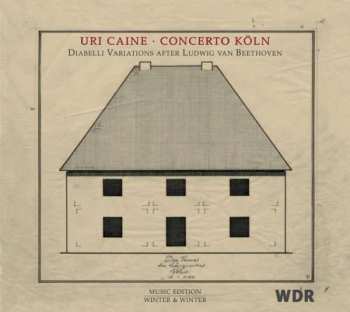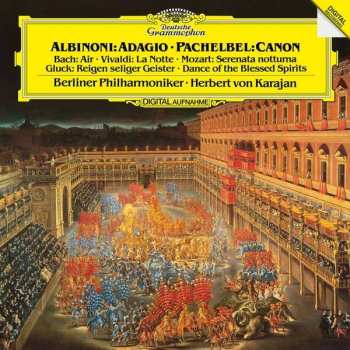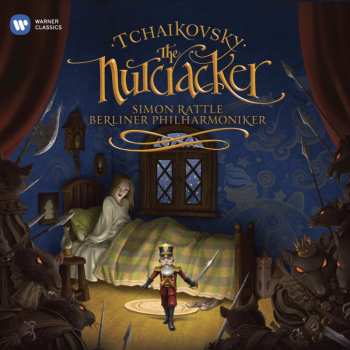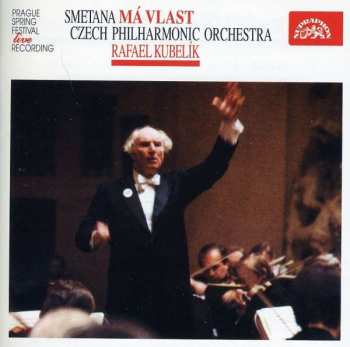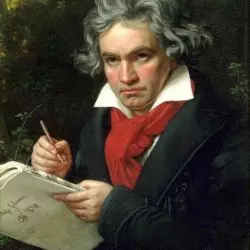Diabelli-variationen Op.120 Für Klavier & Orchester - CD
Winter & Winter
3. júla 2020
Európa
After Mahler, Wagner, Schumann and Bach, Uri Caine takes on another challenge - the music of a composer who has become the innovator par excellence of the Western musical tradition. Beethoven's later work poses a particular risk, as the composer, in the last years of his life, closed himself off in his own, barely accessible world. His works bec...
Stav
Nové
Dostupnosť
Cena
23,99 €
27,99 €
Dostupnosť
Podrobnosti
| Názov | Diabelli-variationen Op.120 Für Klavier & Orchester |
| Interpret | Ludwig van Beethoven |
| Formát | CD |
| Vydavateľstvo | Winter & Winter |
| Krajina vydania | Európa |
| Dátum vydania | 3. júla 2020 |
| Prvé vydanie | 2020 |
| ID produktu | 151178 |
After Mahler, Wagner, Schumann and Bach, Uri Caine takes on another challenge - the music of a composer who has become the innovator par excellence of the Western musical tradition. Beethoven's later work poses a particular risk, as the composer, in the last years of his life, closed himself off in his own, barely accessible world. His works became true inner monologues, and he alone held the key to truly understanding them. Anyone expecting Uri Caine to emulate his approach to Bach's Goldberg Variations will be very surprised. His Bach was a wide range of musical styles - and Bach lived alongside a wide range of musical languages, genres and forms. But his Beethoven is the real Beethoven from start to finish. When you play with an orchestra (here, the Concerto Köln, one of the finest ensembles of its kind), with parts written out, there is less room for adventurous journeys. And yet Uri manages to turn his friendly take on Beethoven's Diabelli Variations into an adventure. Adventure. Why? The first thing that comes to mind when Uri Caine and Concerto Cologne perform together on stage or record in the same studio is some kind of piano concerto. Are Uri's Diabelli Variations a piano concerto? Not at all! During their journey together, piano and orchestra talk, argue, meet and part, joke, play, remain silent..... But the piano is never the soloist and the orchestra is never the support. Both are dependent on each other and both influence each other in different ways. Sometimes they form a shape together (Variations XII); sometimes the piano blends into the orchestra's structure and adds a new, original voice (Variations XX); sometimes the piano plays alone, usually in pairs of variations (V-VI, XVI-XVII); sometimes Uri replaces his own piano part by taking over the role of conductor for a short time. The orchestra remains faithful to Beethoven's signature, but the piano often chooses to stay true to the mood. The distinct character of each variation and the original formal plan remain unchanged (only Variations VII and XXVII have been omitted entirely). The echoes of the waltz - its harmony, its melodic form - are still present in the piano improvisations. We hear them like the refrains of a jazz piece, and Uri succeeds wonderfully in combining the language of jazz with Beethoven's peculiar and unmistakable late style. Variation XXXI, usually referred to as the minore variation, here essentially unchanged, thus becomes common territory where the two languages (Beethoven's and Caine's) intermingle. When Uri decides to explore new territories, he never forgets where he came from and what next step awaits him. Long excursions are out of place here. That is why each variation is as long as Beethoven's original. With arbitrary piano improvisations, the whole would suffer and the building would inevitably collapse. Instead we hear a solid construction in which the humour is enhanced (the aforementioned Variation XIII or the parody of Leporello's opening aria from Don Giovanni in Variation XXII, to which Uri adds new, longer runs of orchestral triplets), but where the high counterpoints sound as precise, necessary, deep and soulful as in Beethoven (Variations XXIV & VIII). XXXII; Uri adds his own extraordinary cadenza after the fermata to Variation XXXII with a final allusion to the "Moonlight Sonata"). Beethoven's late works are unimaginable without these contrapuntal outpourings, auc.
Album zasahuje do žánrov Klasická hudba a Romantika.
Ludwig van Beethoven
U nás nájdete všetko!
Cez
182 000
LP a
302 000
CD
v ponuke
Vernostná zľava až 5%
Pre registrovaných zákazníkov
Majte prehľad!
Najpokročilejšie sledovanie
dostupnosti a objednávok
